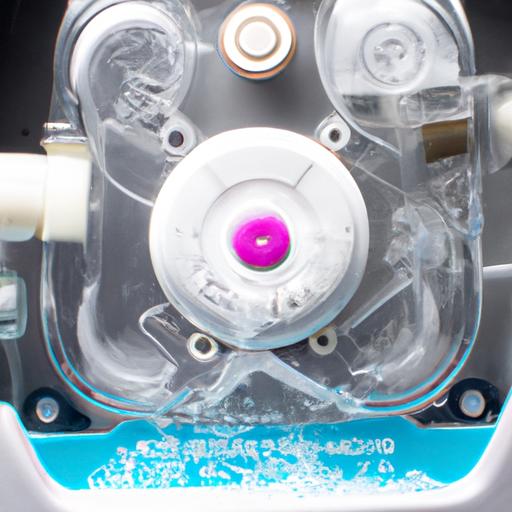
Discover troubleshooting steps and solutions to fix the issue of your waterpik water flosser making loud noise. Maintain a quiet and effective oral hygiene routine.
Maintaining a good oral hygiene routine is essential for a healthy smile. Alongside regular brushing and flossing, using a Waterpik water flosser can greatly improve your oral health. However, it can be quite frustrating when your Waterpik water flosser starts making loud noises during operation. In this article, we will explore the causes behind this issue and provide you with easy troubleshooting steps and solutions to resolve it.

Inner components of a Waterpik water flosser: water pressure, air bubbles, and motor
Understanding the Causes of Loud Noise
To effectively tackle the loud noise problem with your Waterpik water flosser, it’s crucial to understand the possible causes. Several factors can contribute to this issue, including:
1. Water Pressure
Waterpik water flossers rely on water pressure to function properly. If the water pressure is too high, it can lead to excessive noise. Adjusting the water pressure settings may help alleviate the problem.
2. Air Bubbles
The presence of air bubbles within the water flosser can cause disruptive noises. These air bubbles can form due to improper filling of the water reservoir or a malfunctioning valve. We will discuss how to address this issue in the troubleshooting section.
3. Motor Malfunction
Sometimes, the loud noise can be attributed to a malfunctioning motor. If the motor is not running smoothly, it can produce unusual sounds. We will provide you with steps on how to identify and resolve motor-related problems.

Troubleshooting and Solutions
Now that we have identified the potential causes, let’s dive into troubleshooting steps and solutions to help you fix the loud noise issue with your Waterpik water flosser.
1. Check for Clogs and Clean the Device
- Step 1: Turn off and unplug your Waterpik water flosser.
- Step 2: Remove the water reservoir and inspect it for any clogs or debris. Clean it thoroughly with warm water and mild soap.
- Step 3: Check the flosser tip for any obstructions. Remove the tip and rinse it under running water to ensure it is clear.
- Step 4: Examine the hose and water inlet for any blockages. Use a soft brush or pipe cleaner to remove any debris carefully.
2. Adjust Water Pressure Settings
- Step 1: Turn on your Waterpik water flosser.
- Step 2: Gradually decrease the water pressure using the control dial on the device until the noise subsides.
- Step 3: Test different pressure settings and find the optimal one that reduces noise without compromising effectiveness.
3. Address Air Bubbles
- Step 1: Fill the water reservoir with lukewarm water. Ensure it is properly seated and securely attached to the device.
- Step 2: Submerge the flosser tip in the water, and turn on the device for a few seconds to allow any air bubbles to escape.
- Step 3: If the noise persists, detach the flosser tip, hold it under water, and activate the device to remove any remaining air bubbles.
4. Seek Professional Assistance
If none of the above solutions resolve the loud noise issue, it is advisable to seek professional assistance. Contact Waterpik customer support or consult a dental professional who can provide further guidance and assistance.
Preventive Measures and Maintenance
Prevention is always better than cure. By following these preventive measures and maintenance tips, you can minimize the chances of encountering loud noise issues with your Waterpik water flosser:
- Regular Cleaning: Clean your water flosser after each use to prevent debris buildup and clogs.
- Proper Storage: Store your Waterpik water flosser in a clean and dry place to avoid moisture-related problems.
- Replace Consumables: Replace flosser tips and other consumables as recommended by the manufacturer to ensure optimal performance.
- Regular Inspections: Periodically inspect your device for any signs of wear and tear. Promptly address any issues to prevent further damage.
In conclusion, a Waterpik water flosser is an excellent tool for maintaining good oral hygiene. However, if you experience loud noise during its operation, it’s crucial to troubleshoot and resolve the issue promptly. By following the troubleshooting steps and preventive measures provided in this article, you can ensure a quieter and more effective water flossing experience.
Remember, if you still encounter difficulties, don’t hesitate to seek professional assistance. Your dental health is worth investing in, and resolving the noise issue will help you maintain a healthy and beautiful smile!
For further information and reviews on different Waterpik water flosser models, visit BestWaterFlosserHQ.





